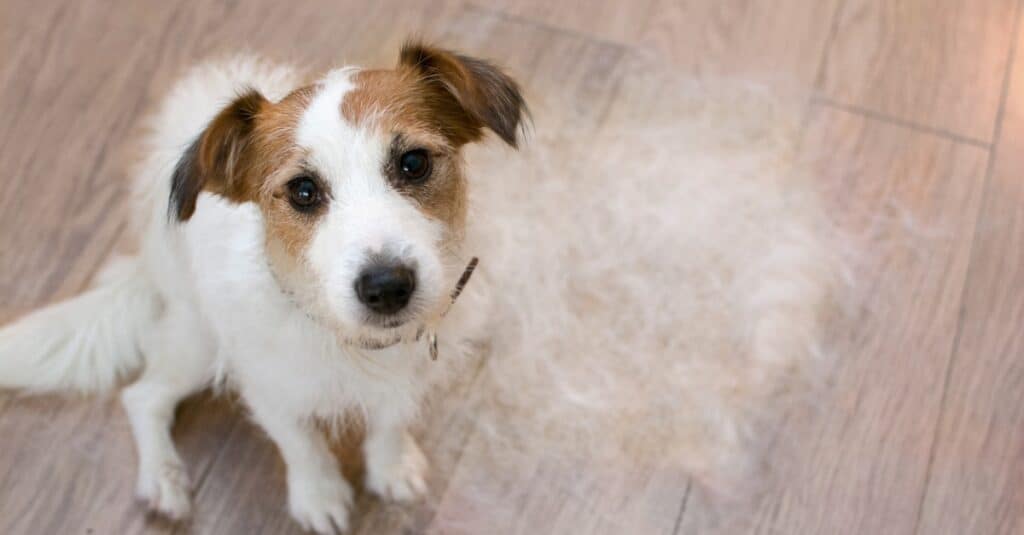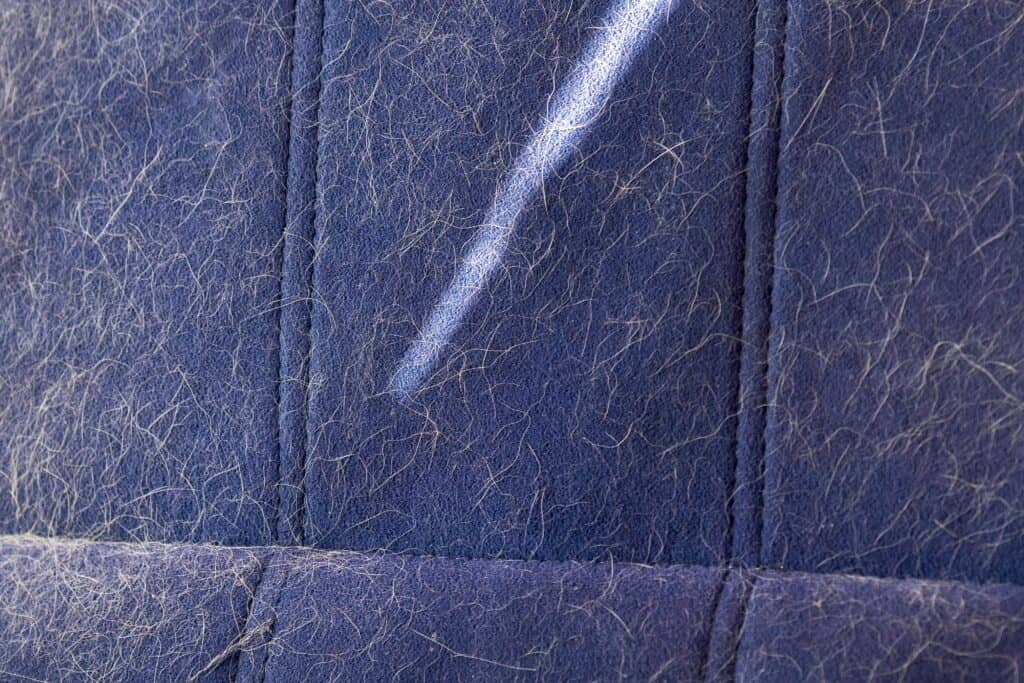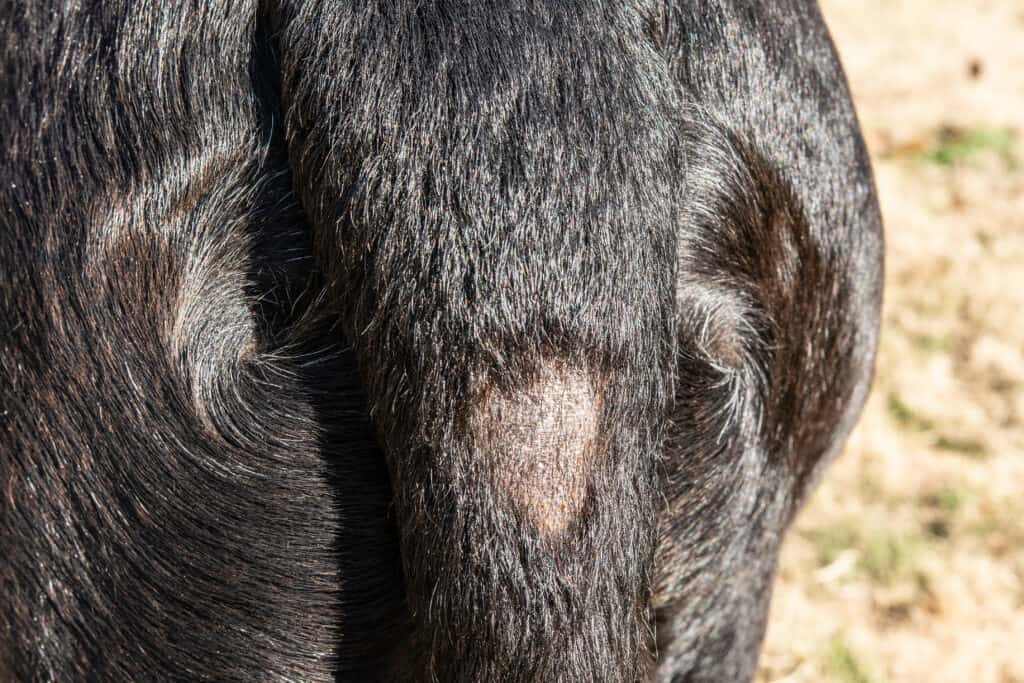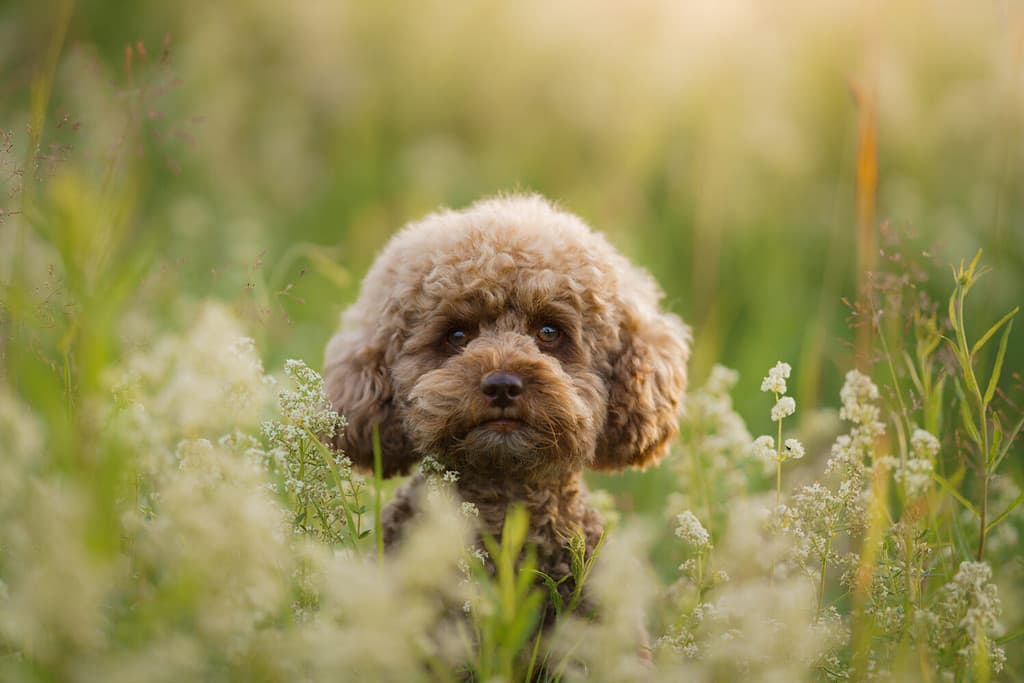If you have a canine companion in your home, you are likely used to wearing a thin layer of their fur on your clothing. Though we all expect our dogs to shed from time to time, excessive shedding can quickly lead to some concern. Many pet parents will wonder if this is normal, and if it is, can you limit the amount of fur around your home?
We want you to be aware of the many causes of excessive shedding in your dog, so let’s breakdown the details below. We’ll discuss how much shedding is normal, when you should be worried, and how you can improve your dog’s skin and coat health moving forward.
Do All Dogs Shed?
If your dog has fur on their body, then they will shed a bit of hair each day. Even humans shed anywhere from 50 to 100 hairs a day, so this is a natural process for our furry friends as well. You can certainly choose breeds of dogs that are known to shed less than other pups, but even so, they will still shed from time to time.

Dog breeds that shed require unique maintenance.
©iStock.com/smrm1977
Which Breeds Are Known To Shed The Most?
Just as we mentioned above, there are certain breeds of dog that are known to shed more than their other canine friends. If you do not want to clean up tumbleweeds of fur around your home, then we suggest avoiding these breeds when it’s time to add to your family.
Some of the dog breeds that shed the most include:
- Siberian Huskies
- German Shepherds
- Labrador Retrievers
- Akitas
- Alaskan Malamutes
- Chow Chows
- Great Pyrenees
- Corgis
- Saint Bernards
- Golden Retrievers
The dogs we listed above are known to shed the most fur throughout the year, but each pup will vary based on how regularly they are brushed and their overall skin and coat health.
Do Dogs Shed More During Certain Seasons?
While our pups may be a far cry from their wild ancestors that lived outdoors, their coats are still meant to protect them from the elements throughout the year. Because of this, you will notice increased shedding during the spring months and the fall months. During the spring they will thin out their coat in preparation for the warm weather, while in the fall they will grow fur that is plush and warming. If you notice an increase in shedding during the spring and the fall, just know that this is a natural process and should slow down soon.
Is Heavy Shedding Normal In Dogs?
Now that we’ve discussed the factors that can cause increased shedding in your dog, it’s time to answer the question of whether or not heavy shedding is normal. Everyone has their own opinion on what heavy shedding actually is, so let’s make sure we are all on the same page first.
If your dog is shedding heavily, we would expect to see them leave a layer of fur behind on furniture or bedding, loose fur in your hands after petting them, and clusters of fur found around your home every few days. If this sounds like what your pup is experiencing, then it would be considered heavy shedding.
Heavy shedding can be extremely bothersome, but sometimes it is still considered normal. If your dog is a high shedding breed, if it is either spring or fall, and if they are not experiencing bald spots or a dull coat appearance, then there is likely nothing wrong with your pup. Excessive shedding can be a pain for the pet parents, but it is often entirely normal.

Finding dog fur on furniture in large amounts could be a sign of heavy shedding.
©darksoul72/Shutterstock.com
When Should I Worry About My Dog’s Shedding?
So when should you worry about your dog’s heavy shedding? Sometimes heavy shedding in dogs can develop due to an underlying health condition, so it’s important to be aware of these complications and their symptoms.
Some underlying health conditions that can cause excessive fur loss include:
Ectoparasites like fleas and ticks: If your dog has a flea or tick infection, then this can certainly impact their overall skin and coat health. These critters can cause extreme itching that leads to excessive scratching, as well as an allergic reaction known as flea allergy dermatitis. The constant skin irritation can cause a dog to lose more hair than usual, especially if they are scratching or biting certain areas constantly. If you see any evidence of fleas or ticks on your dog’s skin, we suggest getting them started on flea and tick prevention immediately.
Skin Allergies: Dogs can form allergies to anything in the world around them. They can be allergic to pollen, grass, fragrances, cleaning supplies, and so many more. If your dog is suffering from an allergy of some kind, you can begin to see evidence of allergies on their skin. These pups may develop skin redness, itchy skin, hives, fur loss, watery eyes, red eyes, and eye swelling. These pups often need medical care to tame their symptoms, so we suggest reaching out to your vet for guidance.
Inadequate Nutrition: If your pup is not getting the nutrients they need to thrive each day, they can begin to experience a dull coat and even fur loss. Thankfully, if you are offering them an AAFCO dog food that is created for their age and size range, this should not be a problem. If you are not feeding them an approved diet and they are losing excessive amounts of fur, we suggest reaching out to your vet to discuss diet change options.
Stress: If your dog is experiencing stress or anxiety for any reason, this can lead to fur loss in some situations. Dogs can experience stress due to any changes in their normal routine or environment, so this could be everything from the loss of an owner to being left alone for long periods. If you think your dog’s fur loss is stress related, then we suggest taking active steps to address the current stressor in their life.
Chronic Disease: There are a few chronic illnesses in dogs that can lead to a decline in their skin and coat health. These conditions can not only lead to a dull or dry coat, but they can even cause patches of fur loss in some situations. Keep in mind that these underlying conditions would often cause much more than fur loss, so you should be on the lookout for other troubling symptoms as well. This includes weight loss, weight gain, changes in appetite, increased thirst, increased urination, chronic infections of the skin or ears, wounds that won’t heal, and even upset GI tract.

Dog shedding is usually not a problem, but if he’s shedding more in some spots than others, it could be a sign of problems like allergies.
©JNix/Shutterstock.com
How To Help Excessive Shedding In Dogs
If you have ruled out any underlying causes of your dog’s shedding, then there are a few at-home methods that can hopefully cut down on the amount of fur they lose each day. Heavy shedding can be bothersome no matter how much you love your pup, so we always want to find ways to make their high shedding seasons more bearable. Let’s list our favorite excessive shedding tips below.
Daily Brushing
Brushing your dog each day can not only reduce the amount of fur that will fall around your home, but it can also improve your dog’s skin and coat health. Daily brushing can help to stimulate the natural oil production on their skin, helping to hydrate the skin and improve coat health. We also suggest brushing your dog once weekly with a de-shedding tool if you have a dog that sheds excessively during certain seasons.
Omega Fatty Acid Supplements
If your dog is known to shed excessively during certain times of the year, then we suggest getting ahead of it with daily omega fatty acids supplements. Fatty acids can not only help to hydrate your dog’s skin, but they can also target inflammation that occurs with inflammatory skin conditions. Just be sure that you either choose a supplement that is created for dogs, or that you get approval from your vet.
Soothing Baths Once A Month
Dogs that are heavy shedders can sometimes benefit from a soothing bath once a month. These baths can help to hydrate their skin, relieve any irritation, and even improve the texture of their coat. Just be sure to look for a dog-approved shampoo that contains soothing ingredients like aloe, oatmeal, coconut, and honey.
Final Thoughts
As you can see, excessive shedding can be normal in some canine friends. Just be sure to be on the lookout for any skin irritation or patches of fur loss, and to reach out to your vet for guidance if they are showing signs of any underlying medical conditions.
Bonus: Are Low-shedding Dogs Really Hypoallergenic?

Poodles probably shed less than any other breed.
©dezy/Shutterstock.com
If you dislike cleaning up dog hair there are many low-shedding breeds to choose from that are also better for allergy sufferers. Breeds like poodles, Yorkshire terriers, Maltese, and Bichon Frise are all excellent choices – as are all of the “doodles. But do these pups deserve the hypoallergenic label that is so often attached to these breeds? They may shed less hair but they still have dander and saliva!
Some dogs may cause fewer allergy symptoms than others – but studies suggest that there is no such thing as a totally hypoallergenic dog. If your allergy to dogs isn’t severe – a low-shedding breed will serve you well. If, however, you are allergic to dander and saliva – you may as well just get a labrador retriever. For some allergy sufferers – their reaction to a dog’s dander is just too severe to even consider owning a dog.
When dog allergies are in the mid-range of severity – immunotherapy shots can help to build up a true tolerance against allergens. Frequent vacuuming, hardwood floors, keeping your pet out of your bedroom and wearing a mask can also help. Experts also recommend spending some time with different dog breeds to see how you react. Severe allergy sufferers usually do better with purebred dogs like poodles – but may not benefit from a doodle that is a hybrid.
The photo featured at the top of this post is © fetrinka/Shutterstock.com
Ready to discover the top 10 cutest dog breeds in the entire world?
How about the fastest dogs, the largest dogs and those that are -- quite frankly -- just the kindest dogs on the planet? Each day, AZ Animals sends out lists just like this to our thousands of email subscribers. And the best part? It's FREE. Join today by entering your email below.
Thank you for reading! Have some feedback for us? Contact the AZ Animals editorial team.






